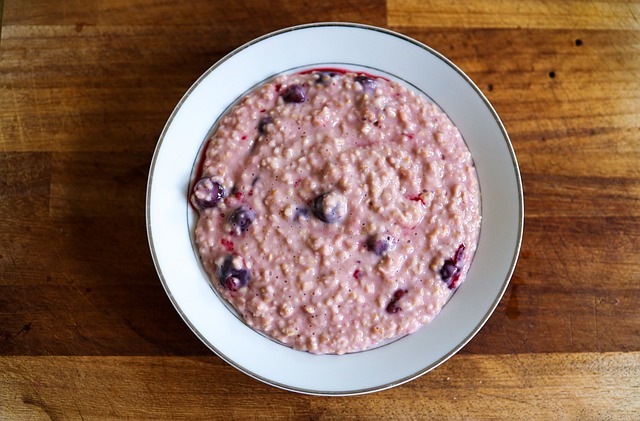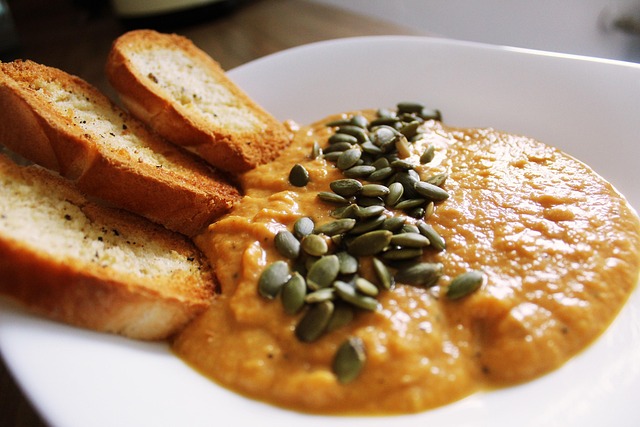7 Effective Tips:-
Eating healthy doesn’t have to break the bank. With a little planning, knowledge, and creativity, you can manage a healthy diet on a budget without sacrificing quality or taste. Whether you’re a student, a working professional, or anyone trying to save money while maintaining a nutritious diet, it’s completely possible to eat well without spending a fortune. This blog post will provide practical tips, meal-planning strategies, and budget-friendly food ideas to help you eat healthy while keeping your wallet happy.
1. Plan Your Meals in Advance

Making a meal plan in advance is one of the best methods to maintain a nutritious diet on a tight budget. Meal planning allows you to make thoughtful decisions about what to eat for the week, reduce food waste, and avoid impulse purchases at the grocery store. When you have a plan, it’s easier to create a shopping list and stick to it, helping you avoid buying unnecessary items that may lead to food waste or unhealthy choices.
Tips for Meal Planning:
- Create a Weekly Menu: Choose meals for the entire week, including breakfast, lunch, dinner, and snacks. This will give you a clear idea of what ingredients you need to buy.
- Use Seasonal Produce: Fruits and vegetables that are in season tend to be cheaper and fresher. Look for deals on seasonal items, and incorporate them into your meals.
- Cook in Batches: Prepare large quantities of food at once, then freeze leftovers for future meals. This reduces cooking time and saves money.
- Stick to Your Shopping List: Once you have your meal plan, make a detailed shopping list based on the recipes you’ve chosen. Stick to it as closely as possible to avoid impulse buys.
By planning your meals in advance, you can better manage your budget while still eating healthy, nutritious foods.
2. Make the Most of Grocery Store Sales
Taking advantage of grocery store sales is a great way to save money on healthy foods. Many stores offer weekly discounts on fresh produce, meat, and pantry staples. With a little research, you can plan your meals around these sales to ensure that you’re getting the best deals on nutritious items.
Tips for Shopping Sales:
- Look for Discounts on Frozen Produce: Frozen fruits and vegetables are often more affordable than fresh ones and have a long shelf life. Plus, they can be just as nutritious as fresh options.
- Buy in Bulk: Items like rice, beans, oats, and pasta are often cheaper when purchased in bulk. If you have the storage space, buying these staples in large quantities can help you save money in the long run.
- Stock Up on Non-Perishable Items: Non-perishable items such as canned beans, tomatoes, and grains are usually less expensive and have a longer shelf life. When these products are on sale, buy in bulk.
- Use Coupons and Discount Apps: Many stores offer digital coupons or apps that can help you save on healthy items. Before you go shopping, make sure you check these..
Shopping sales and taking advantage of discounts is a great strategy for sticking to your budget while ensuring you can purchase healthy foods.
3. Focus on Whole, Unprocessed Foods

Processed foods tend to be more expensive than whole foods, and they often contain added sugars, unhealthy fats, and preservatives. To manage a healthy diet on a budget, focus on buying whole, unprocessed foods such as fruits, vegetables, whole grains, and lean proteins. Not only are these foods typically cheaper, but they also provide more nutrients and are better for your overall health.
Budget-Friendly Whole Food Options:
- Lentils and Beans: Legumes such as lentils and beans are really inexpensive and high in fiber and protein. You can buy them in bulk or canned, making them an easy addition to soups, salads, and stews.
- Whole Grains: Brown rice, quinoa, oats, and whole wheat pasta are inexpensive options that are packed with fiber and nutrients. These grains are versatile and can be used in a variety of dishes, from breakfast to dinner.
- Frozen Vegetables: Frozen vegetables are often just as nutritious as fresh ones, and they can be stored for a longer period. Look for bags of mixed vegetables, spinach, peas, and broccoli.
- Eggs: Eggs are a cost-effective source of high-quality protein, vitamins, and minerals. They can be used in a wide range of meals, from omelets to salads.
By focusing on whole, unprocessed foods, you can save money while enjoying a nutrient-rich diet that supports your health goals.
4. Cook at Home as Much as Possible

Cooking at home is one of the most effective ways to save money while eating healthy. Pre-packaged or take-out meals may be convenient, but they are often more expensive and less nutritious than homemade meals. By cooking at home, you can control the ingredients, portion sizes, and overall nutritional content of your meals.
Tips for Cooking on a Budget:
- Cook Large Meals and Store Leftovers: As mentioned earlier, cooking large meals and storing leftovers is a great way to save time and money. You can prepare a big batch of soup, stew, or casserole, then enjoy it throughout the week.
- Use Simple Ingredients: Focus on using simple, inexpensive ingredients like vegetables, grains, and beans to create nutritious meals. You don’t need to buy expensive or exotic ingredients to eat well.
- Meal Prep for the Week: Dedicate some time on the weekend to meal prepping for the upcoming week. This will make it easier to stick to your healthy eating plan and save time during busy weekdays.
Home cooking does not have to be difficult or time-consuming. With a little practice and planning, you can prepare delicious, healthy meals that fit within your budget.
5. Limit Meat Consumption
One of the most costly things on a supermarket bill is frequently meat. While meat can be part of a healthy diet, you don’t have to rely on it every day. By incorporating more plant-based proteins such as beans, lentils, and tofu into your meals, you can save money while still getting the protein your body needs within budget.
Meatless Meal Ideas:
- Vegetable Stir-Fry: Stir-fry is an easy and budget-friendly meal that can be made with a variety of vegetables, tofu, or tempeh .Serve over brown rice or quinoa for a full supper.
- Chili or Bean Stew: A hearty chili made with beans and vegetables is a cheap and nutritious meal that can be eaten for several days. For added taste, add spices like chili powder and cumin.
- Lentil Soup: Lentils are a cheap and protein-packed option for soups and stews. To create a well-rounded meal, combine them with whole grains and vegetables.
- Vegetable Tacos: Instead of using meat, try filling your tacos with beans, grilled vegetables, and a variety of toppings such as salsa, guacamole, and avocado.
By reducing your meat consumption and incorporating plant-based proteins, you can lower your grocery bills while eating healthily.
6. Buy Generic Brands

When shopping for food, generic or store-brand products are often much cheaper than their branded counterparts. The ingredients and nutritional content are often the same, making them an excellent option for budget-conscious shoppers.
Where to Buy Generic Brands:
- Canned Goods: Most canned vegetables, beans, and tomatoes are available in both brand-name and generic varieties. To make it in budget, choose the generic version.
- Grains and Pasta: Grains like rice, quinoa, and oats, as well as pasta, can be found in store brands at a lower price than name-brand options.
- Frozen Foods: Generic frozen vegetables and fruits are just as good as the branded versions and can save you money without compromising quality.
Switching to generic brands for your everyday essentials is an easy way to cut costs without sacrificing the quality of your diet.
7. Avoid Processed Snacks and Junk Food
Processed snacks and junk food are often more expensive than whole foods, and they provide little to no nutritional value. To maintain a healthy diet on a budget, avoid spending your money on unhealthy snacks like chips, cookies, and sugary drinks. Instead, focus on affordable, nutrient-dense snacks that will keep you satisfied between meals.
Healthy Snack Ideas:
- Popcorn: Air-popped popcorn is an inexpensive and satisfying snack that’s high in fiber.
- Greek Yogurt with Fruit: Greek yogurt is a great source of protein, and pairing it with fresh or frozen fruit creates a filling, nutrient-packed snack.
- Carrot Sticks with Hummus: Carrots are cheap and crunchy, and pairing them with hummus adds protein and healthy fats for a balanced snack.
- Nuts and Seeds: Purchasing nuts and seeds in bulk might save you money, even if they can be pricey in greater numbers. They provide healthy fats, protein, and fiber.
By avoiding processed snacks and junk food, you can maintain a healthy diet without spending extra money on items that don’t provide much nutritional value.
8. Grow Your Own Food
If you have access to a garden or even a small balcony, consider growing your own fruits and vegetables. Gardening can be a cost-effective way to supplement your diet with fresh, homegrown produce. Even if you don’t have a lot of space, you can grow herbs, lettuce, tomatoes, and other easy-to-grow plants in containers.
Benefits of Growing Your Own Food:
- Lower Grocery Bills: Once you’ve invested in seeds or plants, growing your own produce can buy in budget.
- Freshness and Flavor: Homegrown produce is often fresher and more flavorful than store-bought options.
- Satisfaction and Knowledge: Growing your own food is a rewarding experience, and it teaches you about where your food comes from.
Even if you start small, growing your own food can help you save money while improving the quality of your diet.
Conclusion:
Eating a healthy diet on a budget is entirely achievable with the right strategies and mindset. By planning your meals, shopping smart, focusing on whole foods, and reducing food waste, you can enjoy nutritious meals without spending a fortune. Remember to buy in bulk, cook at home, and make the most of sales and discounts. With a little effort and creativity, you can maintain a balanced diet that supports your health and well-being, all while keeping your budget in check.
How can I eat healthy on a tight budget?
Eating healthy on a budget involves meal planning, focusing on whole and unprocessed foods, buying in bulk, and taking advantage of grocery store sales. Simple, nutritious ingredients like beans, lentils, and frozen vegetables can help reduce costs while maintaining a balanced diet.
What are some affordable healthy foods I can buy?
Some affordable healthy foods include beans, lentils, eggs, oats, brown rice, frozen vegetables, seasonal fruits and veggies, whole grains, and canned goods. These items are nutrient-dense, versatile, and budget-friendly.
Is it cheaper to cook at home or eat out?
Cooking at home is significantly cheaper than eating out. When you cook, you have control over the ingredients and portions, which helps you save money and eat healthier. It also allows you to create larger batches of meals, reducing the cost per serving.
Can I follow a healthy diet without buying expensive organic foods?
Yes, you can maintain a healthy diet without buying organic foods. While organic options can be pricier, conventional produce, whole grains, legumes, and frozen vegetables are nutritious and affordable. Focus on the nutritional value rather than the price tag.
What are some healthy snacks on a budget?
Healthy and budget-friendly snacks include air-popped popcorn, Greek yogurt with fruit, carrot sticks with hummus, nuts, and seeds. These snacks are easy to prepare, nutritious, and cost-effective.
